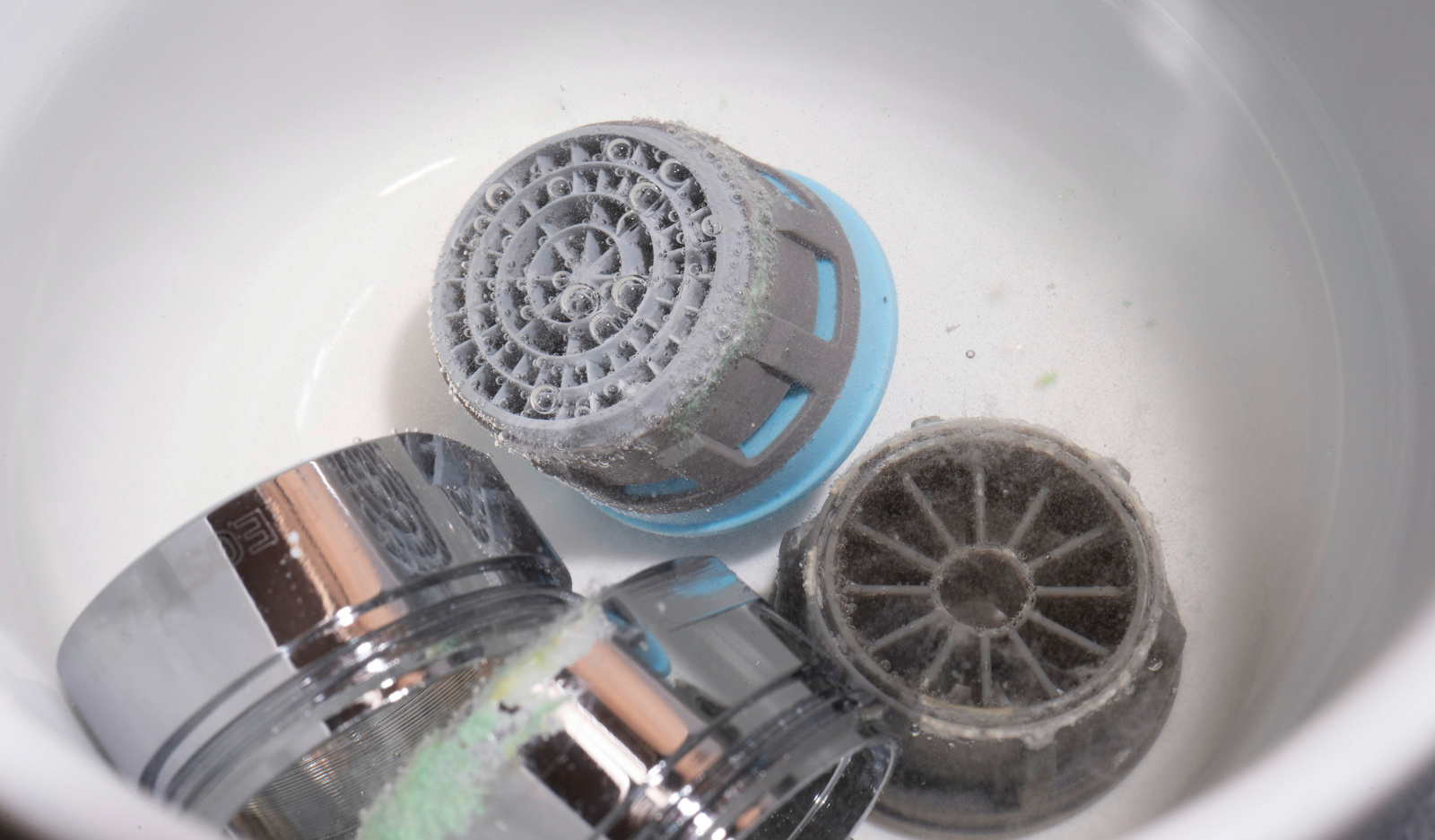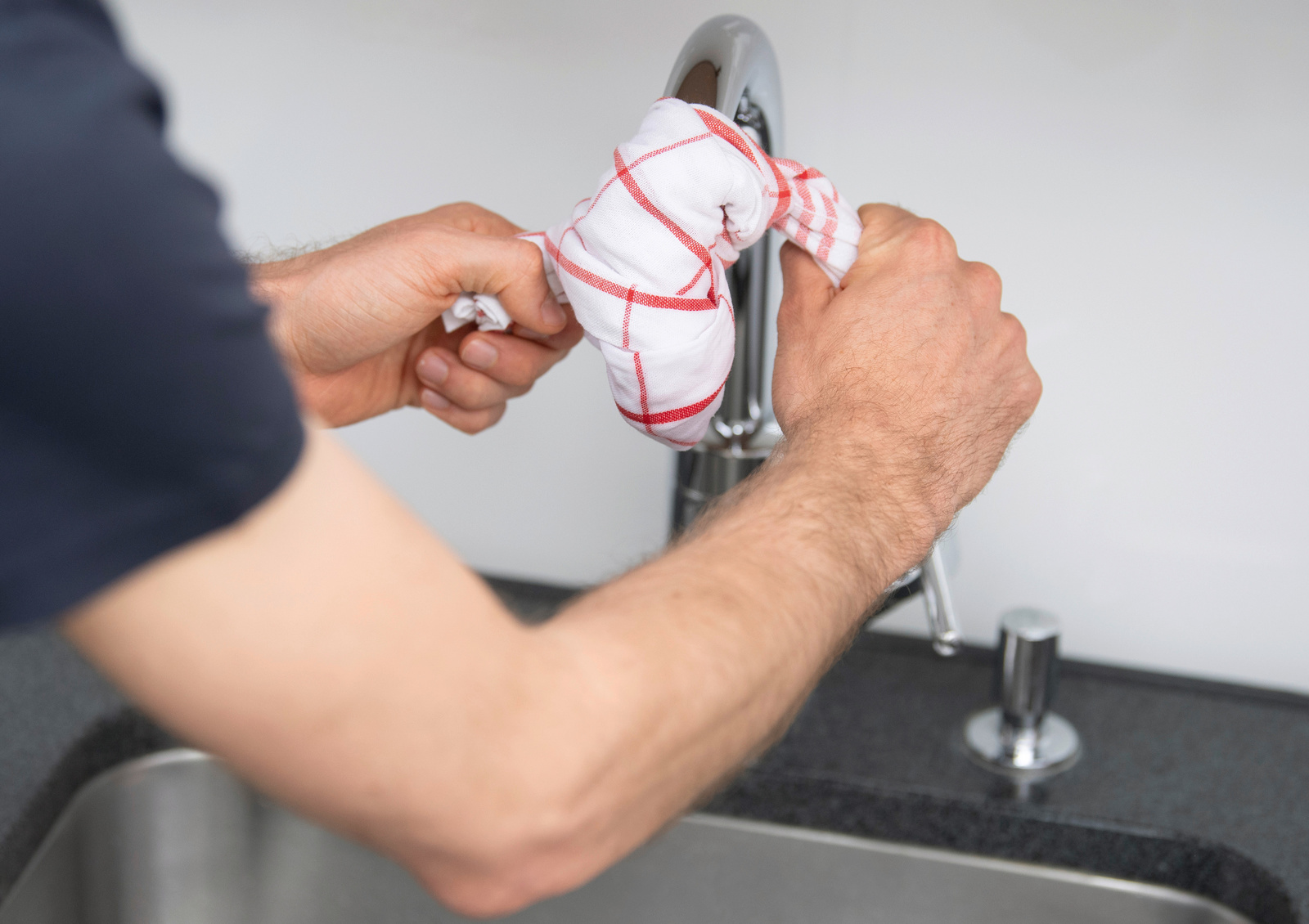Descaling faucets
Stubborn limescale can quickly deposit on faucets in bathrooms. To ensure that the shiny fittings remain beautiful and the water can flow freely from the tap, everything should be descaled on a regular basis. With these tips, you can do this without any scrubbing.

Removing limescale in good time
Encrusted limescale on polished chrome bathroom fittings is not just unsightly – the longer it is left there, the harder it is to remove. If the tap is calcified, the water also flows out more slowly and sprays in different directions.
Even worse, lime deposits are a breeding ground for bacteria. If you drink water from a calcified tap, you are also drinking bacteria.
You should therefore regularly clean the tap and remove the limescale as best you can before it forms a thick coating.
Removing limescale from faucets: The best household remedies
For particularly calciferous water in the home, we recommend regular descaling. In doing so, you should not only clean the entire fitting, but also carefully remove the deposits from the faucet aerator or mixer jet in particular.
What to do:
- For cleaning: Unscrew the aerator or mixer jet by hand or using a pipe wrench. It is best to wrap a cloth around the tap in order to prevent scratches in the precious metal when unscrewing.
- Then dismantle the nozzle into three parts: A filter, a union nut and a gasket.
- Place all three parts in vinegar or vinegar essence for approximately 15 minutes until the limescale dissolves. Citric acid has the same effect. Simply dissolve half a tablespoon of citric acid powder in 4 ounces of warm water and place the parts in this.
- After descaling, rinse everything in clean water and reassemble.


Descaling faucets without any tools
If you need to be slightly quicker, you can also descale the faucet without dismantling into its components.
The trick is to soak a cotton cloth, for example a dish cloth, with vinegar or lemon juice and water, and wrap this around the tap. Leave the vinegar-water mixture to work for a while – or, in the case of extremely stubborn scale, leave it overnight.
If you have a balloon at home, you can fill this with vinegar water and put this over the faucet to soak the limescale. This also works with a small plastic bag.
Then rinse the fitting with clean water and polish it dry with a microfiber cloth – the faucet is clean and shiny again. If there are still dirt or rust particles in the tap aerator, we recommend unscrewing it and thoroughly cleaning it.
If the fitting is free of limescale, the rest of the sink can be thoroughly cleaned and then the heart of the bathroom will look like new again.
Descaling taps with detergent
If you want to use a detergent in the case of heavy calcification, you should use an acidic sanitary cleaner (pH value between 0 and 4) and carefully clean the fittings with a soft sponge or a microfiber cloth. You should handle scouring agents carefully as the fine abrasive particles they contain may scratch delicate aluminium and chrome surfaces.





